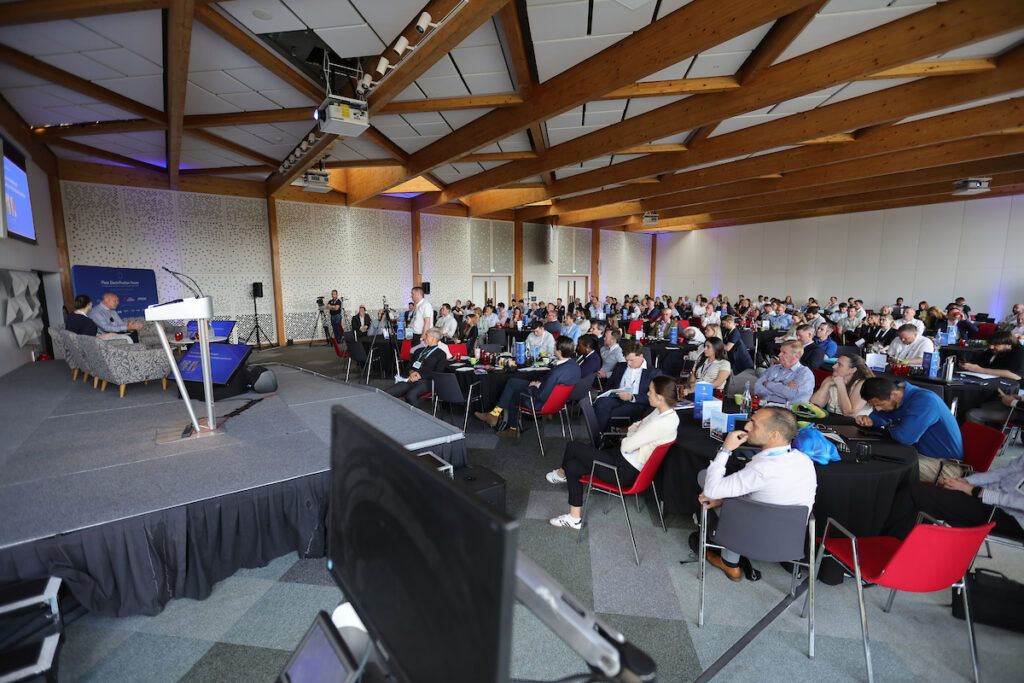The European Commission has proposed a 2030 zero-emissions target for new city buses and 90% emissions reductions for new trucks by 2040.
It says these targets will help to reduce CO2 emissions in the transport sector – trucks, city buses, and long-distance buses are responsible for over 6% of total EU greenhouse gas (GHG) emissions and more than 25% of GHG emissions from road transport.
According to the Commission, these strengthened emissions standards would ensure that this segment of the road transport sector contributes to the shift to zero-emissions mobility and the EU’s climate and zero pollution objectives.
The Commission proposes phasing in stronger CO2 emissions standards for almost all new heavy-duty vehicles (HDVs) from 2030 onwards. HDVs with certified CO2 emissions, compared to 2019 levels, specifically:
- 45% emissions reductions from 2030;
- 65% emission reductions from 2035;
- 90% emissions reduction from 2040.
To stimulate faster deployment of zero-emission buses in cities, the Commission also proposes to make all new city buses zero-emission as of 2030.
In line with the European Green Deal and REPowerEU objectives, the Commission says this proposal will also have a positive impact on the energy transition, by lowering demand for imported fossil fuels and enhancing energy savings and efficiencies in the EU’s transport sector. It will provide benefits for European transport operators and users by reducing fuel costs and total cost of ownership, and ensure a wider deployment of more energy-efficient vehicles. It will also improve air quality, notably in cities, and the health of Europeans.
Sandra Roling, Director of Transport at the Climate Group, says the proposals don’t go far enough.
She said: “Today’s European Commission proposal to decarbonise heavy road transport by mandating a 90% CO2 reduction by 2040 is disappointing and doesn’t go far enough. Together with EV100+ member companies, we have called for a full 100% CO2 reduction in Europe’s heaviest, most polluting vehicles by 2035, and today’s proposal falls well short of this. Without a full phase-out, the announcement today leaves needless uncertainty.
“In addition, the interim targets are too low, and start too late. We need to set a clear pace from the outset to create the market dynamics that achieve the target. The technology is ready, but now needs to be scaled at speed, supported by clear targets and robust policy frameworks. EV100+ members are ready to lead and are fully committed to completing the decarbonisation of their heavy-duty fleets internationally by no later than 2040 – showing much more ambitious targets are possible than the Commission has set today. Not using the opportunity to match their ambition will ultimately damage the competitiveness of European industries, the health of its people and jeopardise our climate goals.
“We urge the European Parliament and Council to be bolder and strengthen the proposal with a full petrol and diesel phase out date and ambitious, early interim targets in the further process. That would provide a stronger signal to businesses across the EU to invest in rapidly decarbonising the heaviest, most polluting vehicles on the EU’s roads, supporting its climate targets as well as the long-term competitiveness of its industry.”
The EU is a market leader in the production of trucks and buses and a common legal framework helps to secure that position for the future. In particular, the revised standards provide a clear and long-term signal to guide EU industry investments in innovative zero-emission technologies and boost the rollout of recharging and refuelling infrastructure.
Emissions in the HDV sector have been increasing year-on-year since 2014 with the exception of 2020 due to the COVID-19 pandemic. In 2019, freight emissions were 44% higher than emissions from the aviation sector and 37% higher than maritime transport emissions.
The vast majority of heavy-duty vehicles in the EU fleet (99%) currently run on internal combustion engines, fuelled largely by imported fossil fuels such as diesel. This adds to the EU’s energy dependency and current volatility of the energy market.
The current HDV emissions standards date from 2019, but are no longer in line with the EU’s climate objectives. Existing legislation does not provide a sufficiently clear and long-term signal to investors and does not reflect the new reality in the energy sector and the rapid developments in the HDV industry globally. The proposed new CO2standards are in line with the EU’s increased climate ambitions, the Fit for 55 package and the Paris Agreement.
To support this proposal, investments need to be channelled into zero-emission vehicles and into the recharging and refuelling infrastructure, and the Commission has already proposed the Alternative Fuels Infrastructure Regulation to develop the necessary charging infrastructure to support the green transition of the heavy duty vehicles sector. In particular, the Commission proposed to install charging and fuelling points at regular intervals on major highways: every 60 kilometres for electric charging and every 150 kilometres for hydrogen refuelling. The Commission is working intensively with the co-legislators to finalise the negotiations on these proposals.
Image courtesy of Shutterstock.








